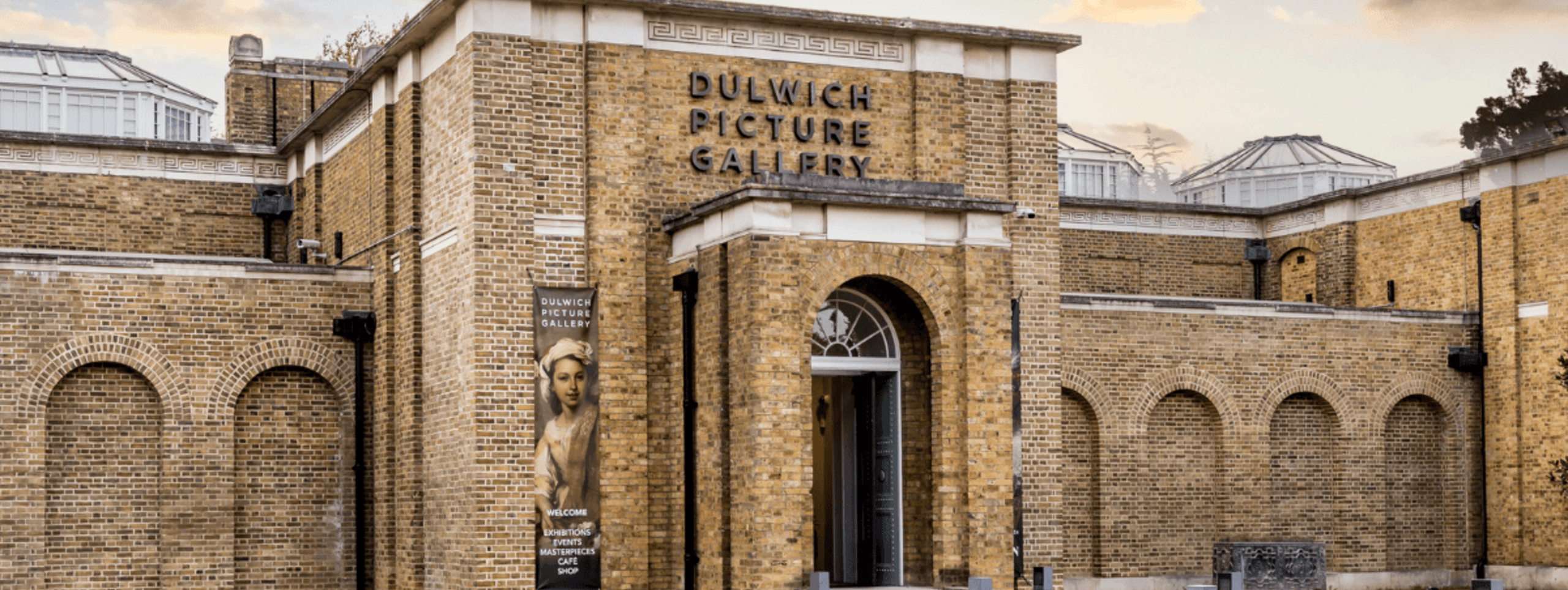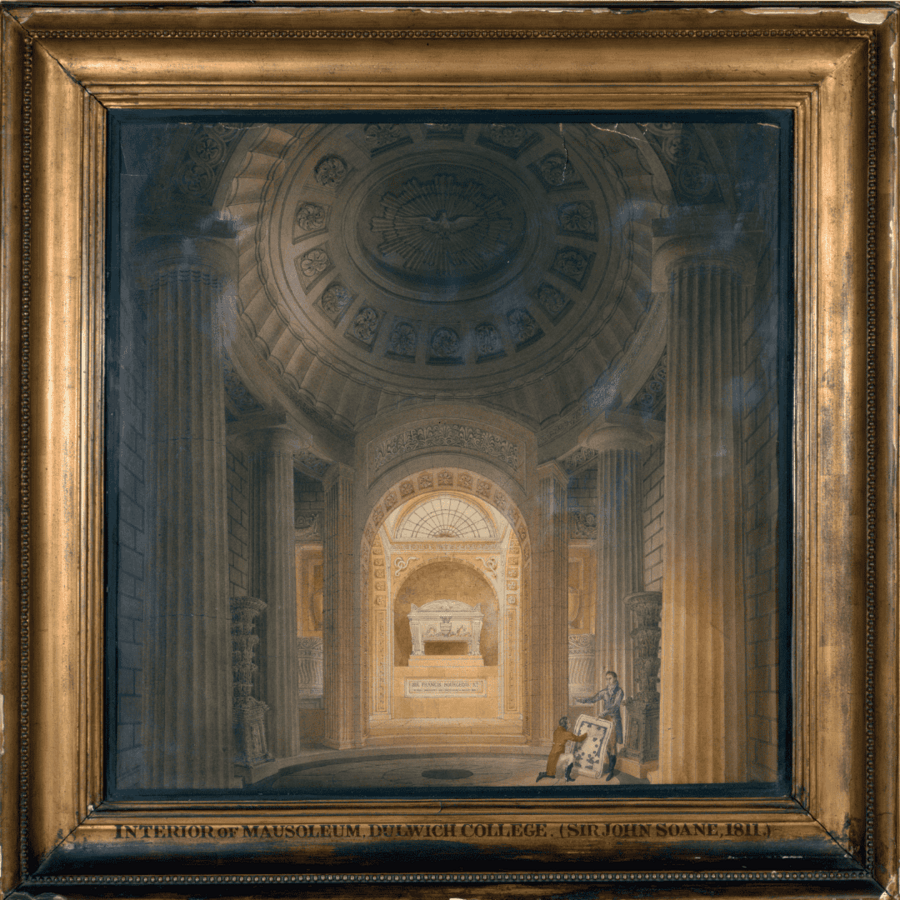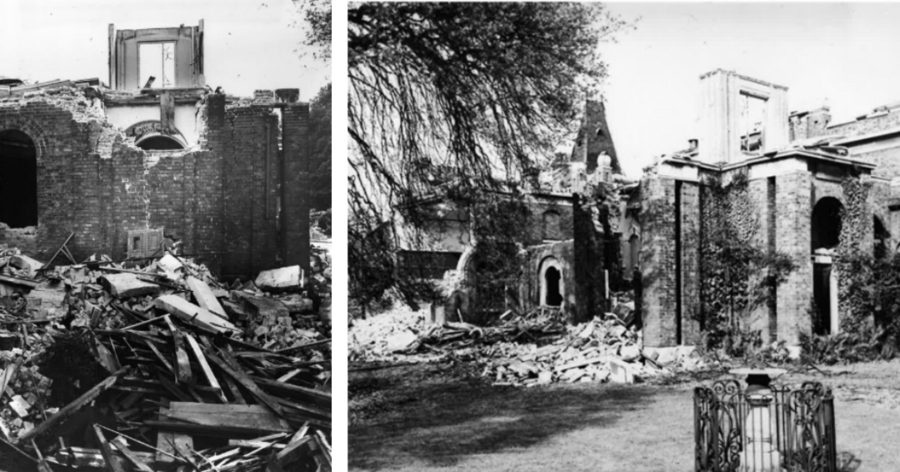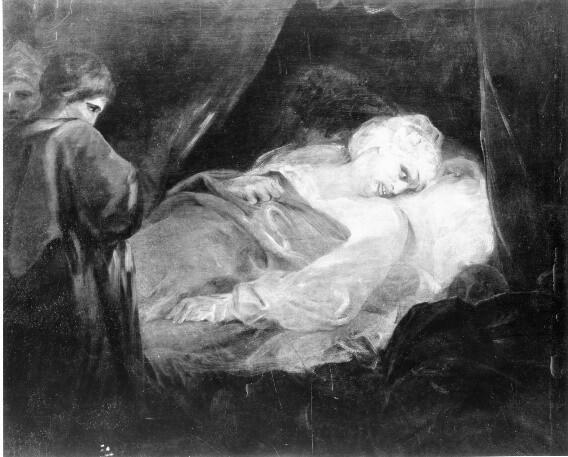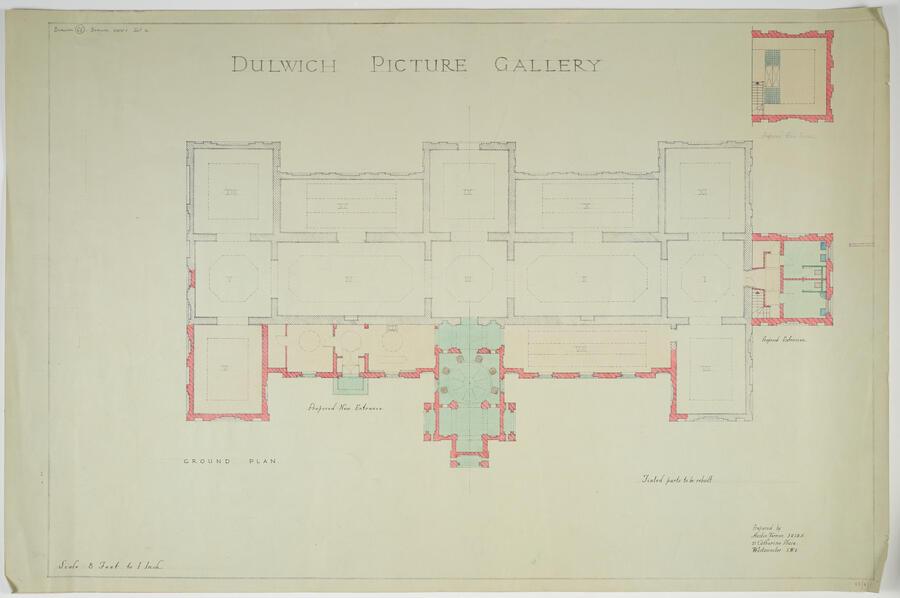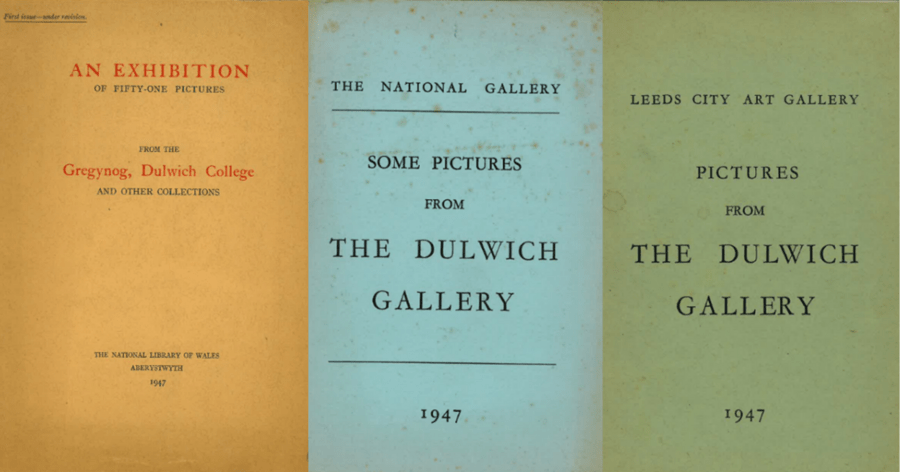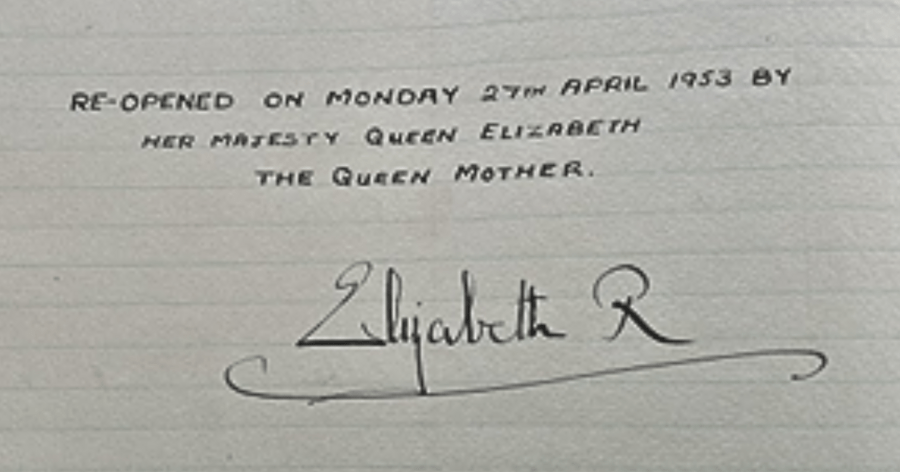Image above: Soane Office, Interior perspective of the Mausoleum at Dulwich Picture Gallery, 1812.
Having forged a 15-feet deep crater where the bomb fell in nearby Gallery Road, it is no surprise that the Gallery suffered severe and widespread damage, with the mausoleum – the burial place of its three founders – destroyed. The chicken wire that had been installed under the Gallery’s skylights in 1939, as a preventative measure to catch falling glass and masonry in case of bombing, was no match for this blast.
